Can Hair Loss Be Reversed?

Pattern hair loss is a common condition that affects both men and women. While there have been advancements in treatments such as DHT-blockers for male pattern hair loss, and an injection treatment that has gained popularity since 2011, a complete cure remains elusive. Despite promises from pharmaceutical companies and hair cloning research, solutions to fully reverse hair loss have not yet been achieved.
While an outright cure for hair loss is not available, pattern hair loss can be managed effectively to thicken thinning hair, and increase scalp hair coverage. I will discuss the challenges in finding a cure and why existing treatments can only provide improvement rather than a complete restoration of lost hair.
Why Is There No Cure for Hair Loss
There are several main reasons why there isn’t an outright cure for male, and female pattern hair loss. A cure for hair loss would imply that even the baldest person can regain all their hair back, like they were a young teenager again with a full head of hair. A cure would also imply that hair loss can be stopped completely. Medication like finasteride for male pattern hair loss doesn’t stop or prevent progressive hair thinning, but only slows it down.
The second reason why pattern hair loss can’t be cured is that the cause of pattern hair loss is genetic, so the genes that cause the propensity for pattern hair loss are hardwired into the DNA. A cure for pattern hair loss would imply that a person’s genetics can be altered, which is physically impossible for children and adults, and highly controversial and unethical to be done in unborn children.
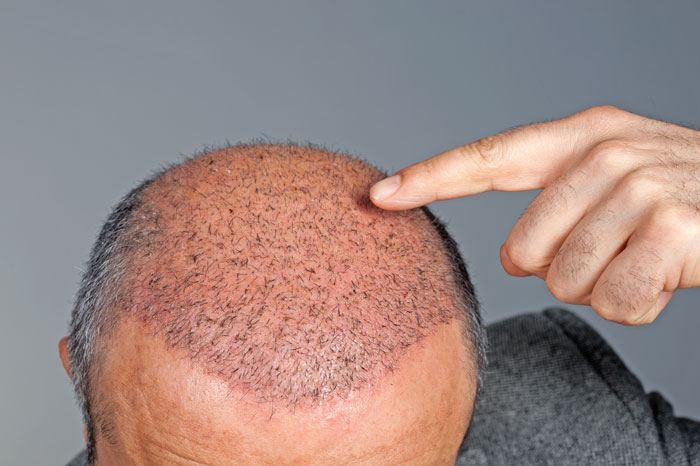

Hair Transplant Limitations
People often assume that hair transplantation is the ultimate treatment for hair loss. However, all hair transplants can do is transfer hair from the back of the head to the frontal hairline, mid-scalp, and crown. Pattern hair loss is progressive, and hair transplants by themselves don’t treat progressive hair loss at all, as native hair surrounding transplanted hair grafts continues to thin after hair transplant surgery. The number of hairs that are genetically resistant to hair thinning is only in a small area at the back of the head, which cannot cover all the hair that’s lost in the mid-scalp, frontal hairline, and crown.
While the donor area can be harvested more than once, available hair grafts become less with each surgery, and hair follicles don’t regenerate after they are harvested, so the donor area is eventually exhausted of available hair grafts. Even if FUTs yield more hair grafts than follicular unit extraction, or FUE transplants, the number of hair grafts available cannot replace all the hair that was lost.
Hair transplant surgery also cannot replicate natural hair density. Native hair grows at 50 to 100 hairs per square centimeter. However, transplanted hair grafts cannot exceed 20 grafts per square centimeter to not severely damage scalp skin, and most of all because there isn’t enough blood supply to heal more than that many grafts. Exceeding this number of grafts risks losing all transplanted hair grafts in the area as they don’t have the blood supply necessary to heal and survive until growth.
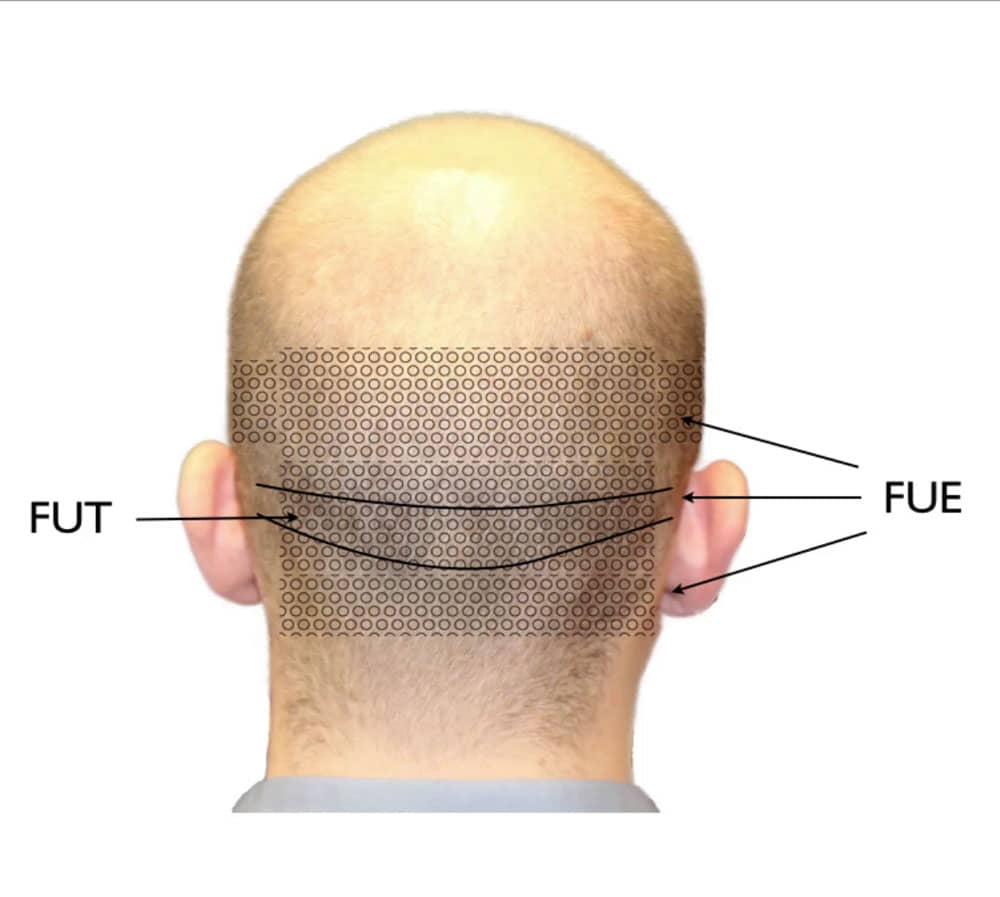
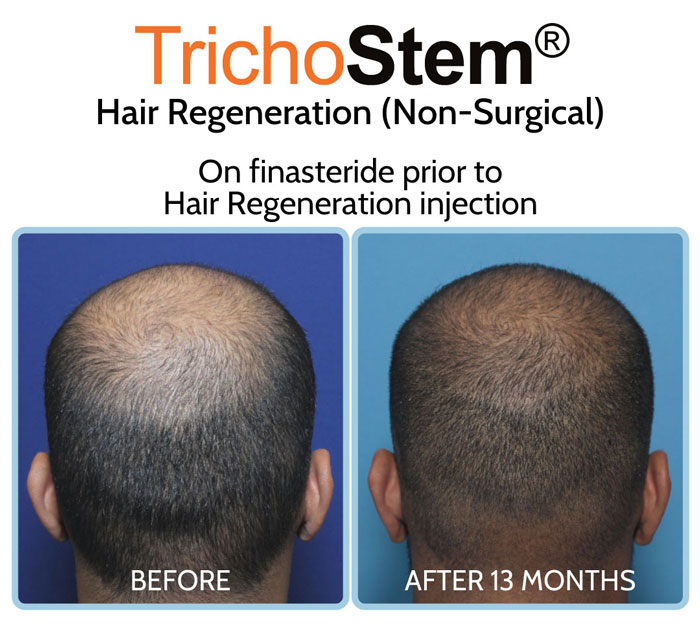
Can Finasteride Stop Hair Loss?
The introduction of finasteride to block the formation of dihydrotestosterone, or DHT, was another major development in treating male pattern hair loss. The hormone testosterone is converted into dihydrotestosterone by the natural enzyme 5-alpha reductase. DHT is present in a significant concentration in the bloodstream in all men, but men with male pattern hair loss have a genetic sensitivity to DHT and experience scalp hair thinning, also called male pattern hair loss, or androgenetic alopecia.
DHT-blockers like finasteride or dutasteride inhibit the enzyme 5-alpha reductase, so it reduces the amount of DHT in the bloodstream, but it doesn’t block all DHT formation. The use of a DHT-blocker like finasteride usually slows hair thinning, but it doesn’t stop it completely, and it can’t reverse hair thinning, so hair grows back significantly thicker after shedding. While DHT-sensitivity is a major factor in male pattern hair loss, it is not the only factor, which is evident in why we can thicken thinning hair in men who have been on finasteride for years with our TrichoStem® Hair Regeneration treatment.
Female Pattern Hair Loss Causes
The cause of female pattern hair loss is not as clearly correlated as that of men. While DHT-sensitivity is a major factor in male pattern hair loss, there is no clear cause of female pattern hair loss among the 30% of women under age 30 who suffer from it. Menopause is a major factor in the 50% of women over age 50 with female pattern hair loss, as decreased estrogen levels correlates with hair thinning.
The common treatments for female pattern hair loss also have limited effectiveness. Minoxidil is a treatment that doesn’t treat thinning hair but rather delays the natural hair shedding cycle, so more hair is present. If minoxidil use is stopped or used too long, a sudden hair shed usually occurs.
Spironolactone is a testosterone blocker prescribed by many doctors, but many women don’t find it effective for treating their pattern loss.
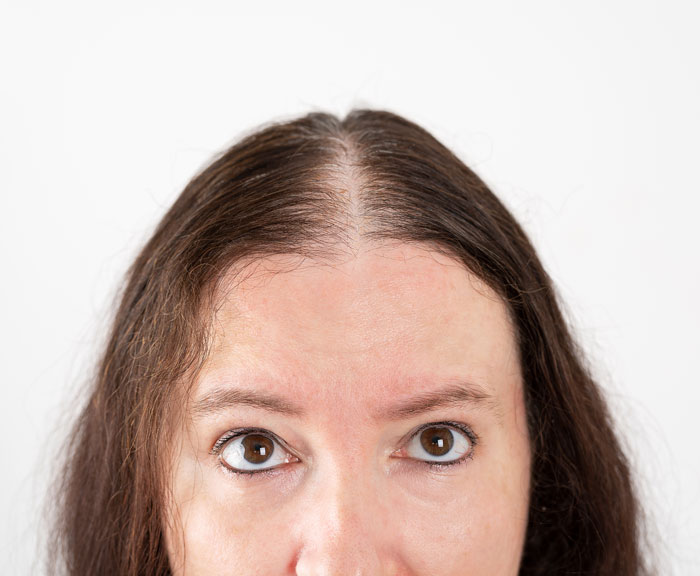
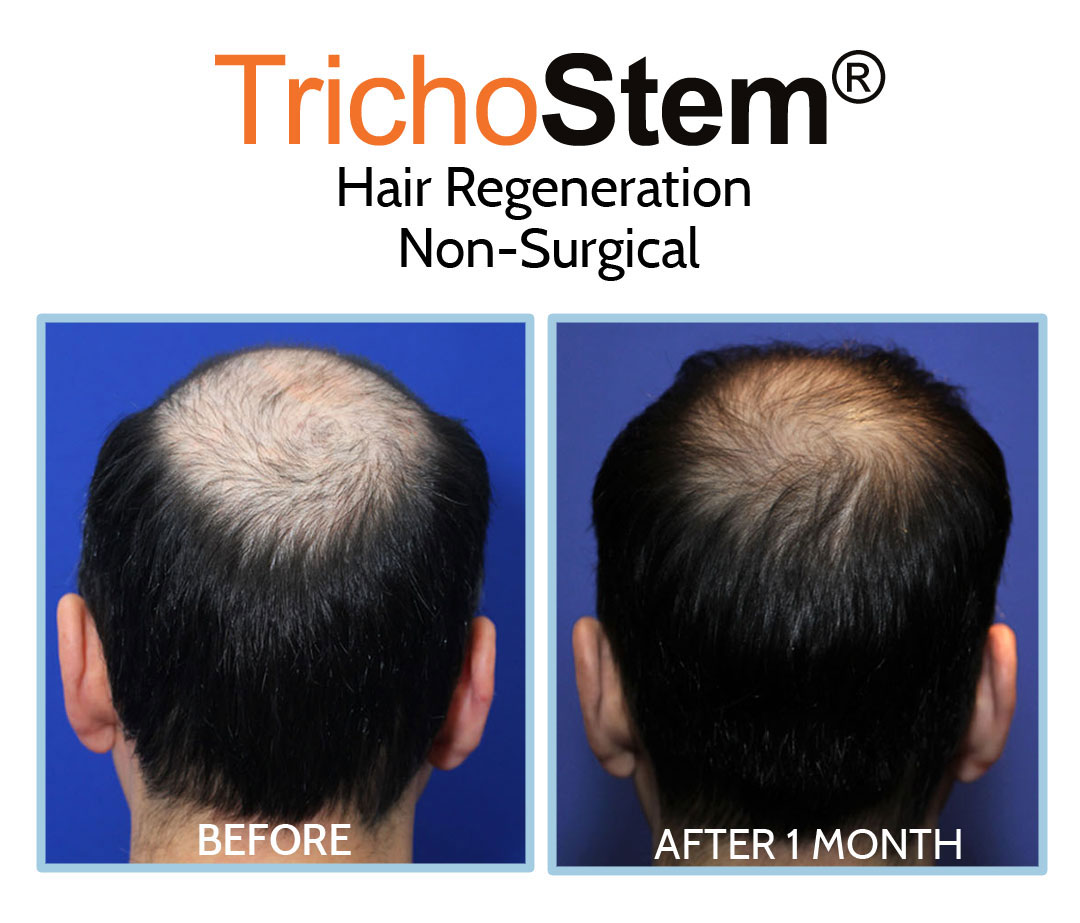
It is rare to come across a woman with a significantly high level of testosterone in their system that it would affect their hair, so I don’t prescribe to my female patients as there isn’t a direct correlation between excess testosterone and hair thinning in women.
Can Hair Loss be Reversed without Surgery?
While pattern hair loss cannot be cured outright, we can thicken thinning hair and stimulate growth from hair follicles that are currently not growing but are still viable. TrichoStem® Hair Regeneration treatment has proven since 2011 that we can do this for over 99% of our male and female pattern hair loss patients, as they achieved greater denser scalp coverage with our treatment.
While this treatment cannot stop progressive hair loss completely or give our patients the hair they had as teenagers, we are able to give them more of their natural hair than they had before treatment and thicken their remaining thinning hair so it covers more of their scalp.
Thickening thinning hair and reactivating growth from follicles that were progressively weakening does prevent continued miniaturization that would lead to permanent loss of hair growth.
Treating pattern hair loss is about active management, not a single absolute cure. For men, their level of DHT-sensitivity is a big factor, so for young men with high DHT-sensitivity and early onset of pattern hair loss, I do prescribe a DHT-blocker like finasteride to continuously slow hair thinning by blocking DHT formation, and combine it with the TrichoStem® Hair Regeneration treatment to thickening thinning hair, and stimulate growth from dormant hair follicles, but the injection treatment does not block DHT-formation.
For women, hormone therapy may be needed for those suffering from pattern hair loss combined with polycystic ovarian syndrome, or PCOS in younger women, along with our treatment to thicken their diffuse hair thinning. Older women with pattern hair loss combined with a drop in estrogen level due to menopause can benefit further with estrogen replacement combined with the TrichoStem® Hair Regeneration treatment.
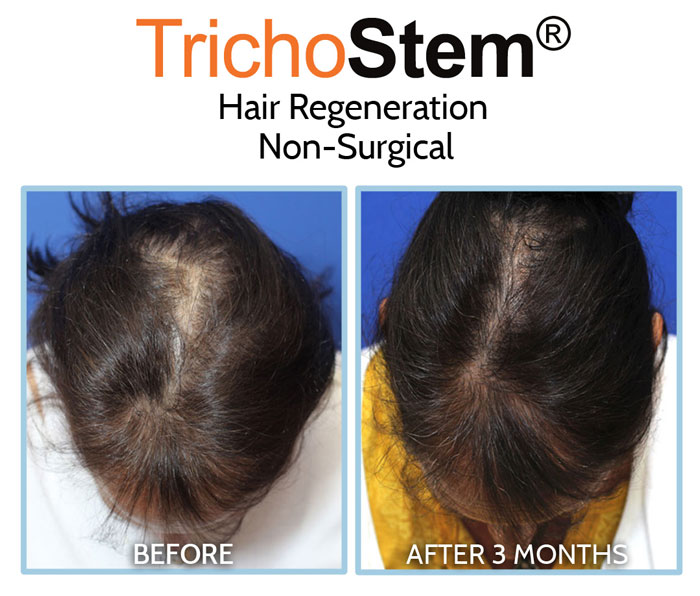
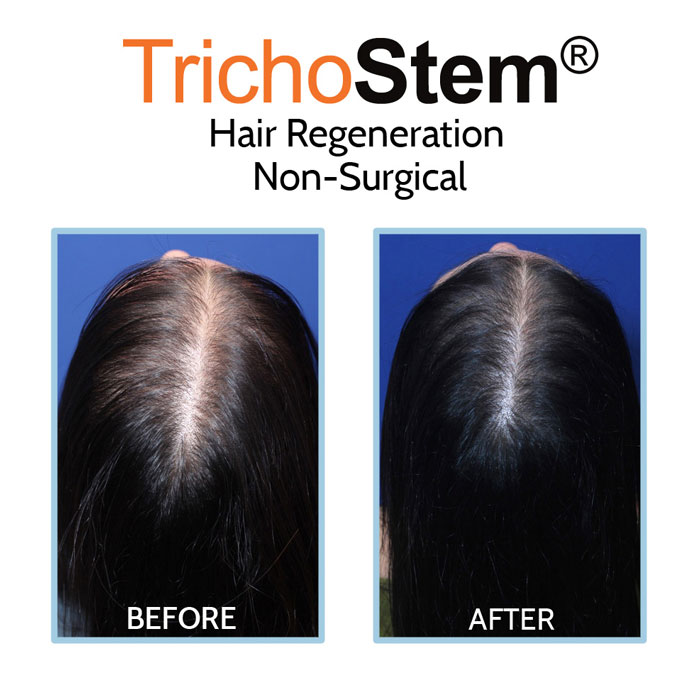
However, many female pattern hair loss patients can improve their hair thickness and scalp coverage with just the TrichoStem® Hair Regeneration treatment. Men who develop pattern hair loss in their 40s or older generally have less DHT-sensitivity, and a good number of these patients can have the TrichoStem® Hair Regeneration treatment to improve their hair density and growth without needing to take a DHT-blocker like finasteride. All male and female TrichoStem® Hair Regeneration patients don’t need to use minoxidil after our injection treatment.
Conclusion
An outright cure to completely stop, or reverse pattern, hair loss and gain back all the hair that is lost remains elusive. Like all genetic conditions, DNA cannot be altered to avoid or cure pattern hair loss. However, thickening thinning hair, and stimulating growth from dormant hair follicles can be done to maximize hair thickness and scalp coverage. I hope you found this information helpful.
Hair Loss Treatment Manhattan, NYC and Long Island, New York
Dr. Amiya Prasad is a Board-certified cosmetic surgeon, and a Fellowship-trained in oculoplastic surgeon. He has over 25 years of experience practicing in New York City, and Long Island. Dr. Prasad has been doing hair transplant surgery since the early days of his medical practice, before discovering TrichoStem® Hair Regeneration. TrichoStem® Hair Regeneration treatment has improved visible scalp covering in over 99% of our male and female pattern hair loss patients without the need for surgery.
To schedule a consultation, fill up the form below or contact any of our offices at (212) 265-8877 in Manhattan, New York City; or (516) 742-4636 in Garden City, Long Island, New York; or Vienna, Virginia at (703) 356-1336.

